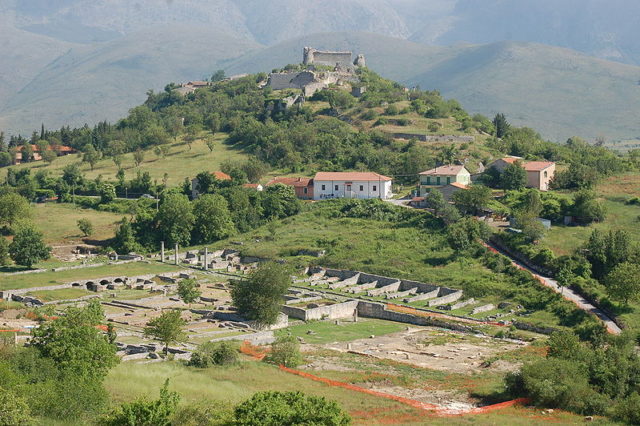This ancient Italian town can be found some four miles north of the town of Avezzano. For such a small place, it holds a big story. What remains of it today can be found on top of a hill that stands around 985 feet above what was once Fucine Lake. Around 125 square miles in size, the lake has been a witness to a number of naval battles.
The ruinous state of the town is due to it being entirely destroyed in a devastating earthquake that took place on January 13, 1915.

The original founders of the town were a tribe known as Aequi: a battle-prone population that occupied central Italy before the Romans became the main governing authority there. Around 304 BC, the little town was occupied by Romans.
It took the Romans a number of battles before they were able to conquer Alba Fucens. Once it fell under their rule, they quickly transferred 6,000 new settlers there.

From that point on, the town continued to grow in both size and wealth. Around 191 BC, Alba Fucens became a municipium. Its location on the crossroads of Via Tiburtina Valeria, an ancient Roman road that linked Rome to the Adriatic Sea, and an important route between the regions of Etruria and Campania, meant Alba Fucens was a strategically important town to control.

It continued on its upward trajectory until the 3rd century AD when things took a different turn. As time passed, conditions in the town deteriorated. Frequent Barbarian attacks and a couple of earthquakes only added to its decline; the fall of the Roman power was also a crucial factor. One of the last famous historical figures to have spent a period of time in Alba Fucens was Justinian who, according to the notable Greek scholar Procopius, came with his troops in 537.

Because of the constant attacks from barbaric tribes, the residents of Alba Fucens decided to move a bit uphill, leaving the old town behind. The two settlements were merged during the 11th century. Prosperity was then brought back to the town; this period lasted until the end of the 12th century.

During the following century, the town was completely obliterated by Charles I of Anjou, the originator of the Second House of Anjou. From that point on, it started a second and lengthy decline. But Alba Fucens refused to give up and managed to endure for centuries to come.

It remained a small and quiet settlement until the 20th century. On January 13, 1915, a devastating earthquake shook central Italy at 07:52 in the morning. With a magnitude of 6.7, the earthquake originated in the town of Avezzano, completely destroying it. It took the lives of 30,000 people. This wasn’t the only earthquake of such magnitude to have struck central Italy. The area has endured a long list of deadly earthquakes, the first recorded being in 1693.

The earthquake was so intense and long – it lasted for a full minute – that this small and ancient settlement was completely leveled and many lives were claimed. The earthquake marked the end for the town.

Alba Fucens remained in its loneliness until 1949 when major archaeological excavations took place under the watchful eye of Joseph Mertens, a professor at the University of Louvain in Belgium. Professor Mertens created an artistic rendering of the town, bringing it back to life once more.
Today, it is a major tourist attraction, offering those who come to visit central Italy a chance to experience both medieval days and old Roman times when the legionnaires stomped up and down its streets.
